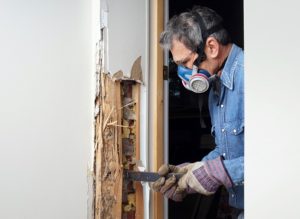 If you find signs of Myrtle Beach termites infestation in your home, the first thing you should do is create a plan on how you can eliminate them. You can opt to work with a local pest control company such as Zap Pest Control or you can choose to do your own termite control.
The first thing you need to understand to effectively get rid of the termites in your home is that effective termite control includes consistent and reliable killing strategies as well as continuous preventive measures. You also need to act fast and start laying out your plan as soon as you see signs of infestation. Keep in mind that termites can quickly cause severe damage to your home if not controlled at once. Also, make sure that your preventive methods are consistent and continuous because termites are known to come back repeatedly.
If you are looking for assistance in creating a plan on how to get rid of termites, here are some steps that you can consider.
If you find signs of Myrtle Beach termites infestation in your home, the first thing you should do is create a plan on how you can eliminate them. You can opt to work with a local pest control company such as Zap Pest Control or you can choose to do your own termite control.
The first thing you need to understand to effectively get rid of the termites in your home is that effective termite control includes consistent and reliable killing strategies as well as continuous preventive measures. You also need to act fast and start laying out your plan as soon as you see signs of infestation. Keep in mind that termites can quickly cause severe damage to your home if not controlled at once. Also, make sure that your preventive methods are consistent and continuous because termites are known to come back repeatedly.
If you are looking for assistance in creating a plan on how to get rid of termites, here are some steps that you can consider.
1. Determine the specific type of termites infesting your home.
In any type of pest control, it is important that you identify the specific type of pest you are dealing with. This will help you choose and plan the most effective way to eliminate them and prevent them from coming back to your house. If you know which type of termite you are dealing with, you will know where in your house they build their nests and that is where you can focus your termite control methods.
There are generally two types of termites infesting American homes: the subterranean termite and the drywood termite. If you see mud tubes running on the ground or on your walls, this means you have subterranean termites. These mud tubes or tunnels not only allow them to efficiently, effectively and safely get from their nest to their food source but also to provide them with sufficient amounts of moisture as they do their tasks.
Drywood termites, on the other hand, do not need as much moisture in order to survive. Thus, they can live and build colonies from cracks and crevices outside your home. If you are not sure which type of termites you are dealing with, seek professional assistance and recommendations from Zap Pest Control.
2. Proceed with your extermination plan
Once you know the specific kind of termites that have infested your home, you will be able to implement the right and most appropriate extermination plan to kill the colony and get rid of them.
For this, you can either use the appropriate type of termiticide or hire a professional pest control company. Just be sure that the termiticide that you will use has been tested and proven effective to kill the termites present in your home. For best results, consult a pest control professional and ask for recommendations on the most effective product to use.
To use a termiticide, you will have to spray the colony’s nest with it. Or if you have not found where their nest is, spray the termiticide in areas where you last saw the termites. Chances are this is where they go for food so they are sure to come back in this place. And once they do, they will pick up the poison and bring it back to their colony.
Keep in mind, however, that termites are not usually killed in one treatment of the termiticide. So you might want to repeat administering the treatment several times until the entire colony is wiped out.
3. Set up your preventive measures
According Myrtle Beach termites experts, the best preventive measure to keep these pests out of your home is setting up baits. Termite baits are usually designed to kill the worker termites as these are often the part of the colony that often comes out to seek and fetch food for the entire colony. And when these worker termites die or do not come back to the colony, other parts of the colony such as the queen, king and soldiers die as well.
The most effective termite baits are set up in multiple areas throughout your home. This will ensure that the worker termites will either pick up the bait and bring back to their colony to eat or eat it themselves and die before being able to come back to their nest. The key is to make the bait seem a natural part of the termites’ environment; for example, covering a piece of wood with a termiticide. When the worker termites feed on the wood or bring pieces of the poisoned wood back to their nest, the entire colony dies.
4. Continue monitoring and setting up your preventive measures
You will need to continue monitoring the baits that you have set up. If you notice signs of continuous activities from the termites, it means your baits did not work and you will have to look for more effective bait for the termites. If you notice no sign of any activity in the area for several days, your preventive treatment has been a success.


 The absence of insects like bees, flies, and mosquitoes are among the changes homeowners notice during the winter season. People often associate them with summer and fall and they consider them as nuisance especially when engaging in outdoor activities. Thanks to the colder weather, homeowners find relief from their bites and stings. However, not seeing these pests flying overhead doesn’t mean other pests are gone, too. You still need to have some sort of
The absence of insects like bees, flies, and mosquitoes are among the changes homeowners notice during the winter season. People often associate them with summer and fall and they consider them as nuisance especially when engaging in outdoor activities. Thanks to the colder weather, homeowners find relief from their bites and stings. However, not seeing these pests flying overhead doesn’t mean other pests are gone, too. You still need to have some sort of  Yes! It really is the most wonderful time of the year! The time has come when family and friends come together. Decorative lights are set up and it’s time for eggnog and Turkey. It’s the season to give thanks and to share your home with your loved ones. The holidays bring people together and your home becomes the center for gathering and entertainment. The last thing you wish to deal with during the festive season is a
Yes! It really is the most wonderful time of the year! The time has come when family and friends come together. Decorative lights are set up and it’s time for eggnog and Turkey. It’s the season to give thanks and to share your home with your loved ones. The holidays bring people together and your home becomes the center for gathering and entertainment. The last thing you wish to deal with during the festive season is a  This holiday season is here and families throughout the country are getting in the festive spirit by stringing lights, wrapping gifts, and decorating their houses. Although such holiday preparations might seem harmless, they could offer opportunities for pests such as
This holiday season is here and families throughout the country are getting in the festive spirit by stringing lights, wrapping gifts, and decorating their houses. Although such holiday preparations might seem harmless, they could offer opportunities for pests such as  If you notice unwanted guests lurking throughout your attic, you will need to implement proper
If you notice unwanted guests lurking throughout your attic, you will need to implement proper  Nothing beats the joy you feel when preparing for the upcoming holiday feast. However, with all that baking and cooking happening, the inevitable crumbs and messes that fall on the floor could draw cockroaches to the kitchen as easy as the smell of a roasting turkey energizes all the couch potatoes from their football watching. To help prevent pests like ants and cockroaches from ruining the holiday cheer, here are a list of cleaning tips that also serve as effective methods of
Nothing beats the joy you feel when preparing for the upcoming holiday feast. However, with all that baking and cooking happening, the inevitable crumbs and messes that fall on the floor could draw cockroaches to the kitchen as easy as the smell of a roasting turkey energizes all the couch potatoes from their football watching. To help prevent pests like ants and cockroaches from ruining the holiday cheer, here are a list of cleaning tips that also serve as effective methods of